'The ‘stache has been his trademark for 15 years': Why Rollie Fingers turned down the Reds
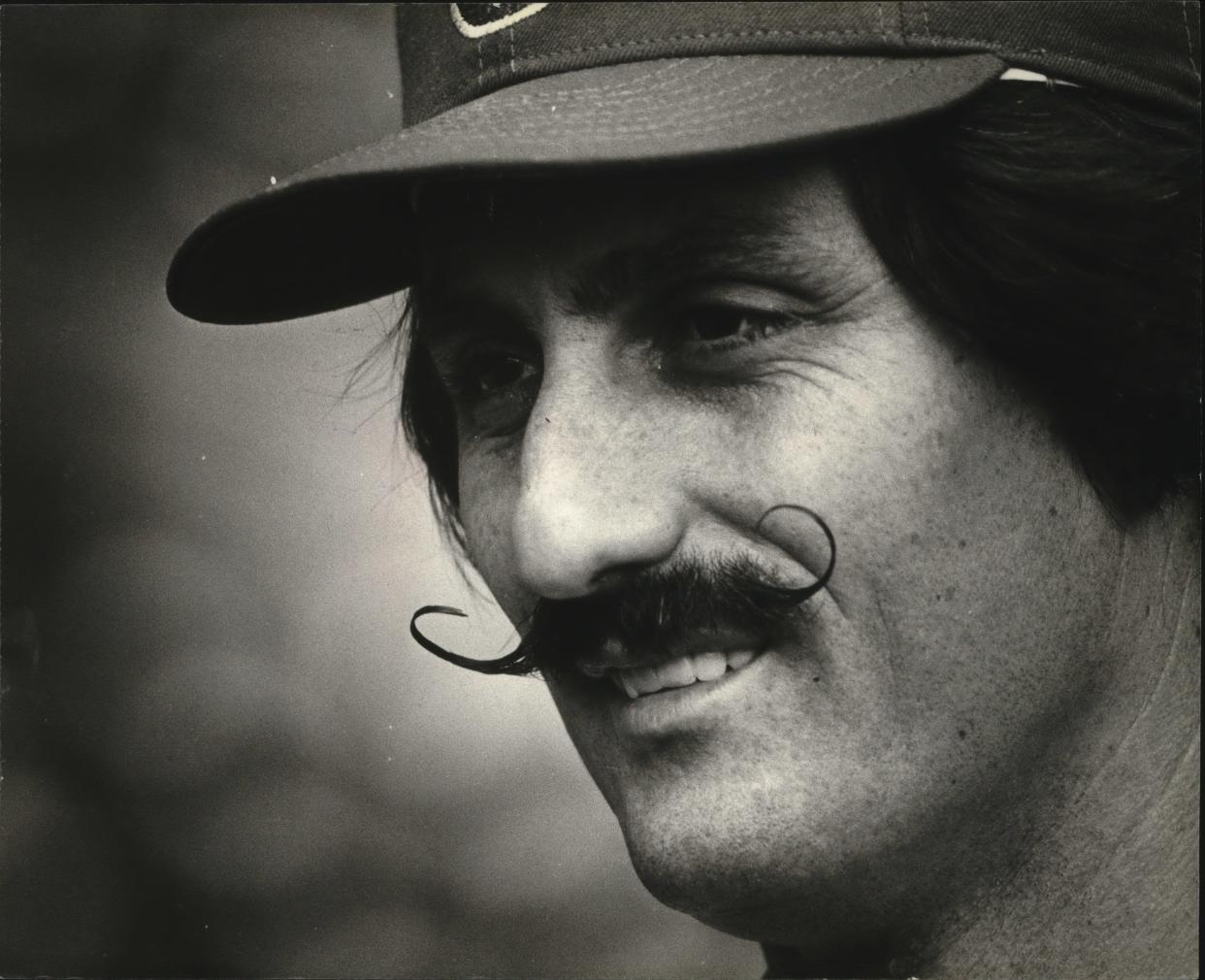
- Oops!Something went wrong.Please try again later.
- Oops!Something went wrong.Please try again later.
- Oops!Something went wrong.Please try again later.
Hall of Fame pitcher Rollie Fingers was a thorn in the side of the Reds in the 1972 World Series, appearing in six games in the Oakland A’s 4-3 series win. But, in the offseason of 1986 he almost signed with Cincinnati, except he refused to shave off his trademark handlebar mustache.
On Feb. 21, 1986, Fingers called the Reds’ clubhouse and informed General Manager Bill Bergesch that he wasn’t going to part with his mustache and turned down the team’s invitation to spring training. The Reds at the time had a no beards or mustache policy.
“I asked him if he wanted me to have Pete (Rose) call him back later,” Bergesch told the Enquirer. “He told me he didn’t think there would be any use if that was our policy.”
Why did Rollie Fingers have a handlebar mustache?
Fingers’ mustache had become his trademark since his early days with the A’s.
“Reggie (Jackson) started it,” Fingers said at the time. “He came to camp one spring with a mustache and Dick Williams didn’t say anything to him. So, in protest Catfish (Hunter), Darold Knowles and I decided to grow mustaches. If Reggie could do it, we said why can’t we? That ticked off Williams and he told us to shave, but Charlie Finley liked it and he offered $300 to any player who would grow a mustache. For $300, I’d a grown one on my rear end.
“Why a handlebar? I wanted to be different. Once I grew it, I got to like it and I got a lot of attention with it. So I kept it.”
Reds manager Pete Rose wanted Rollie Fingers in Cincinnati
Rose was well aware of what Fingers brought to the table, having faced him in the ’72 World Series, where Fingers posted a 1-1 record with a 1.74 ERA and two saves in his six appearances. Fingers allowed only four Reds hits and struck out 11 in 10 1/3 innings.
Rose was one of the few Reds to have success against him in the series, going 1-for-3 with a walk and the game-winning RBI in Game 5.
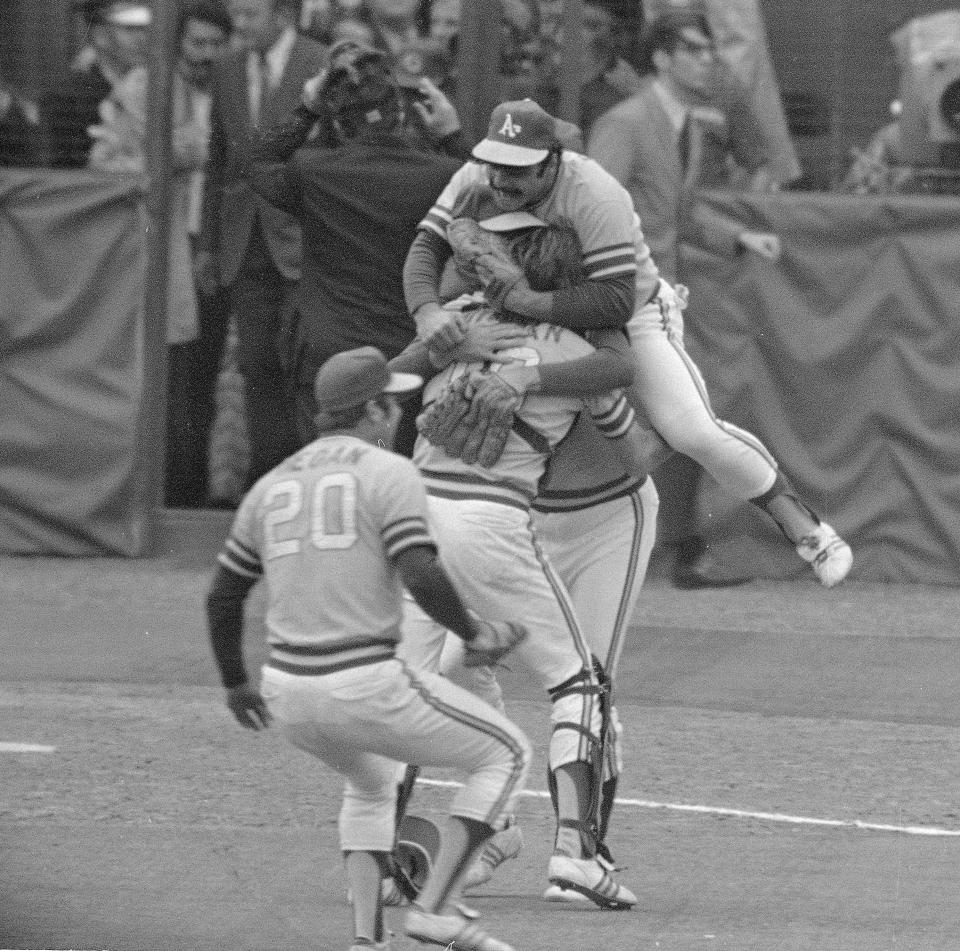
If it was up to the Reds’ manager, though, Fingers would have been in Cincinnati with his mustache.
“I would love to have had him,” Rose told the Enquirer at the time. “But I understand the Reds’ position. The ‘stache has been his trademark for 15 years. Asking him to come here without it would be like asking me to go to another team and not hustle.”
Rose added: “This is not my policy, but I have to live with it because that’s what they want upstairs. I’m not upstairs. I’m below upstairs.”
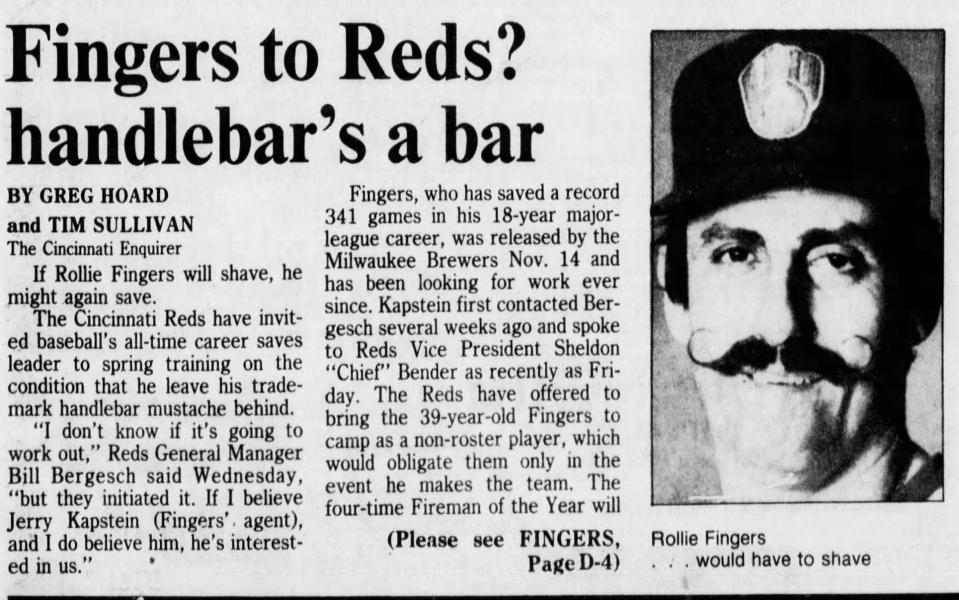
Bergesch said he thought Fingers could have turned his shaving into a money-making opportunity.
“Think of the money a razor company would have paid him for the photographs of him shaving that thing off,” he said.
“Forget that,” Rose replied. “How much would the Reds pay him? Would they give him Marge’s Chevrolet?”
How would Rollie Fingers would have fit in with the 1986 Reds?
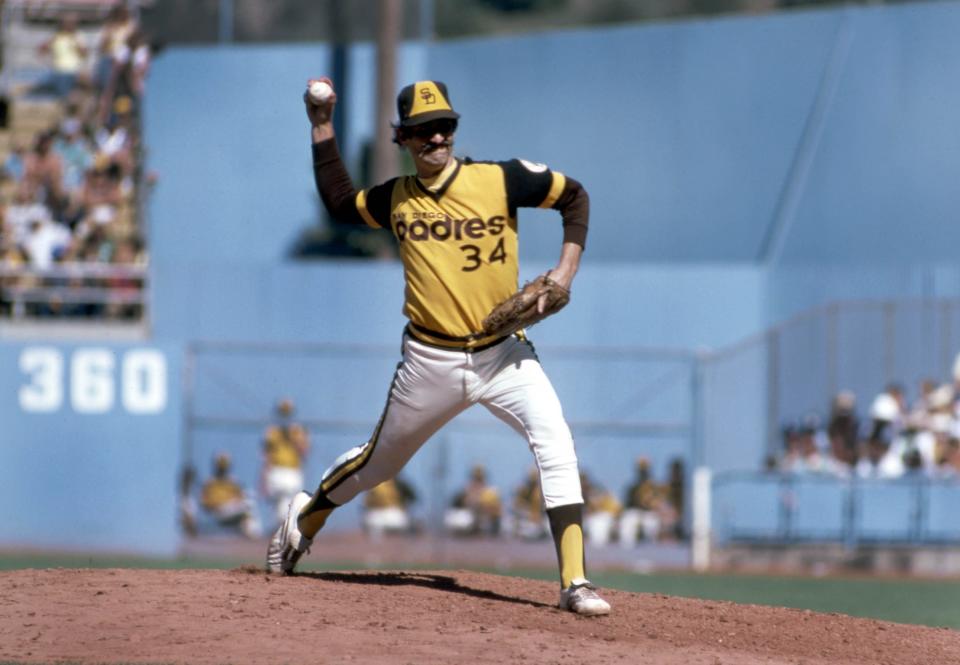
Fingers, who had struggled in 1985 with the Brewers, was MLB’s all-time saves leader at that point. After a season in which he went 1-6 with a 5.04 ERA in 47 games, the Brewers released him. He was available to be signed for just $60,000.
Fingers attributed his struggles to his lack of appearances.
“I wasn’t getting any work,” Fingers told the Associated Press in 1986. “I’ve got to get out there almost every day to be effective. Sometimes, I’d lay around for two or three weeks without pitching. Then I’d get in there and I’d have lost three or four miles (per hour) off my fastball. I didn’t want to go back to Milwaukee, so I asked them to make a deal.”
The plan, according to Rose, would have been to use Fingers as a middle reliever. The Reds were looking for a replacement for Tom Hume, who was traded along with Gary Redus to the Phillies for John Denny. John Franco and Ted Power were being counted on as short relievers for the Reds in 1986.
Rose wasn’t convinced that the Reds would never eventually change their position on facial hair.
“This is 1986,” he said at the time. “Things change. There are a lot of people (in the Reds’ front office) who thought we’d never be wearing red shoes, too, and we are for the first time.”
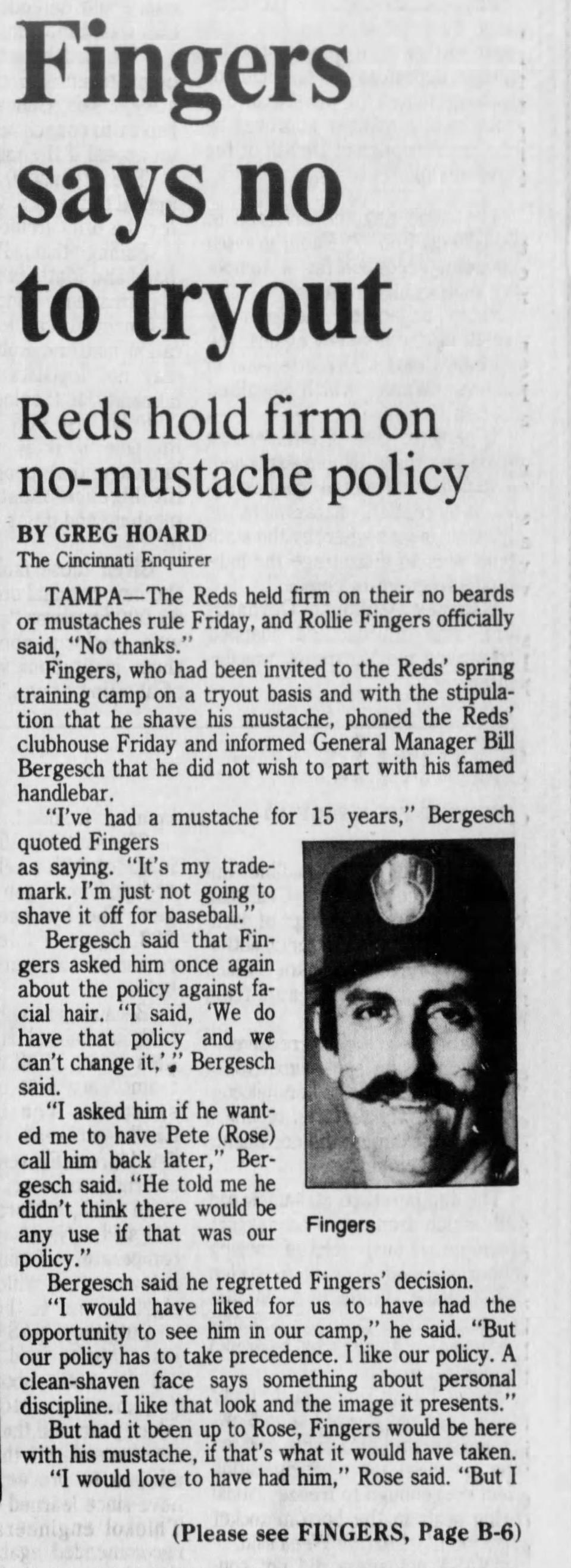
The Reds’ facial hair policy, and the problems it created
Later in the year, Rose told the Enquirer he thought he could convince Reds president Marge Schott that mustaches were okay.
“If you could guarantee me that we would win the division and he’d save 30 games; I could talk Marge into it,” Rose said. “If you could bring me that guarantee, Marge and I would go to dinner.”
Rose opined, “Isn’t it funny that two of the best pitchers in baseball couldn’t play for the Reds — Bruce Sutter and Rick Sutcliffe — and just because they’ve got beards.”
Bergesch said he respected Fingers’ decision and admired his principle, but a rule is a rule.
“If we let Fingers pitch with his mustache,” Bergesch asked, “what do we do with Dave Parker, who was asked to shave his beard when he came here and did?”
Fingers never pitched in the majors again. Retiring with 341 saves, which stood until Jeff Reardon broke it in 1992.
Coincidentally, Reardon signed with the Reds in 1993 and was forced to shave off his trademark beard.
When did the Reds change their facial hair policy?
When Bob Howsam took over as general manager in the late 1960s, the Reds began to strictly enforce the policy, which had been in place since 1902.
In the book Big Red Dynasty, Howsam said if the Reds were based in Aspen, Colo. In the 1970s he would have made sure they had facial hair. He wanted the clean-shaven look because he believe it fit the Midwest more.
Bergesch told the Enquirer in 1986 that there was too much at stake to change the team’s policy.
“Why should we vary our policy for one player when we have never done it in the past,” he said. “If we were to do that, what would I say to Dave Parker and John Denny and Bill Gullickson and Bo Diaz. All of those guys had a beard or a mustache and shaved it when they came to us.”
Nowadays, there are several Reds who sport facial hair. So when did the policy change?
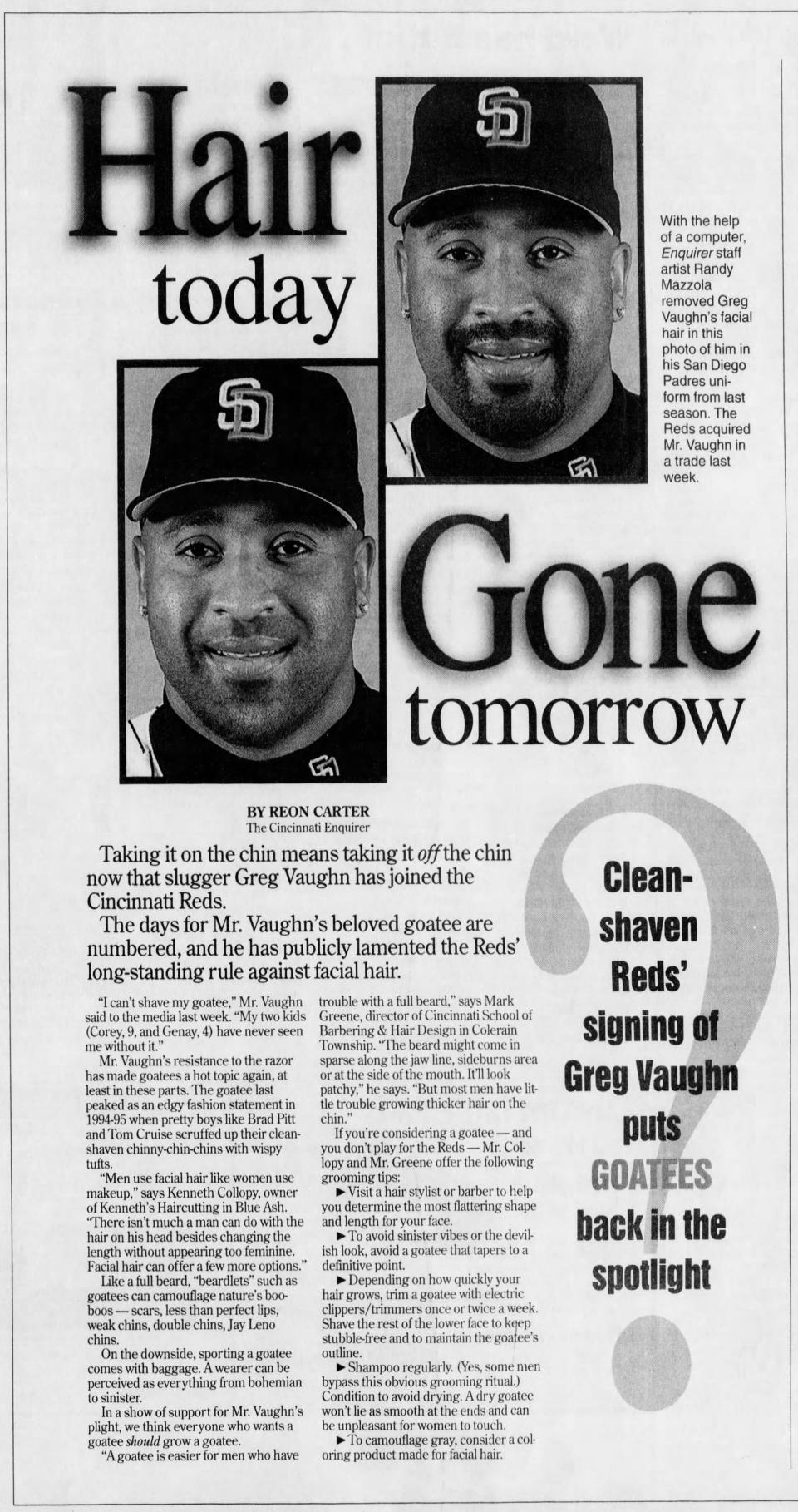
When the Reds traded for outfielder Greg Vaughn in 1999, the old rule went out the window. Vaughn lobbied for the team to drop the rule, saying his two children had never seen him without his goatee.
“That’s my main concern — to find a way to keep my goatee,” Vaughn said in an interview the day of the trade. “It doesn’t matter how you look… Jim (Bowden, the Reds’ general manager) and I talked about that a little bit (Tuesday), but until we sit down face to face, we won’t get it worked out.”
Finally, on Feb. 15, 1999, Schott lifted the ban on facial hair.
She released a statement saying she called Vaughn and told him he could keep his goatee “as long as it was neatly trimmed.”
“My family and I appreciate Mrs. Schott’s decision to relax the policy,” Vaughn said at the time. “I wasn’t trying to rewrite any rules. I’m just more comfortable with my facial hair.”
This article originally appeared on Cincinnati Enquirer: Rollie Fingers refused to shave his mustache and turned down the Reds

